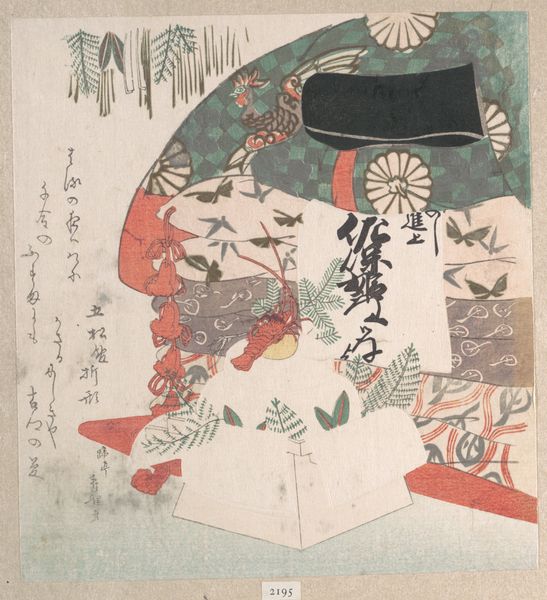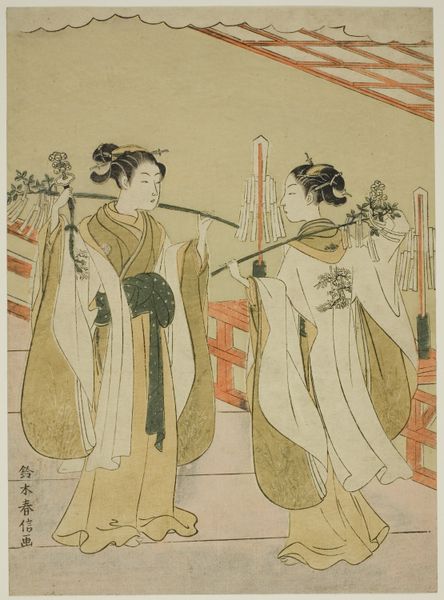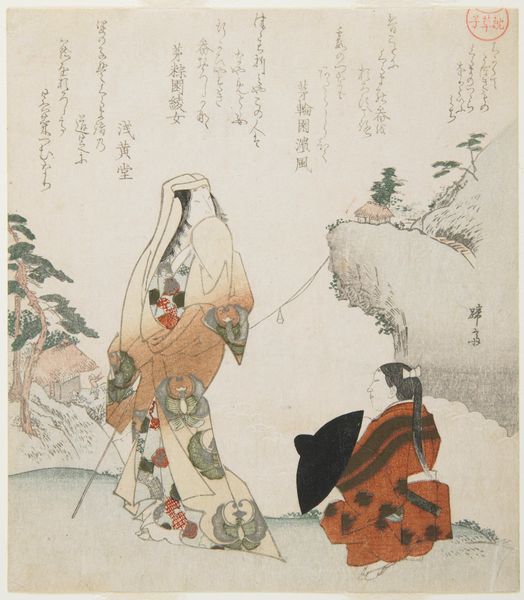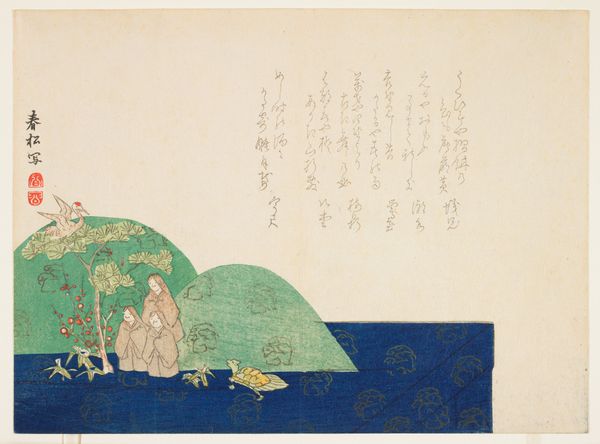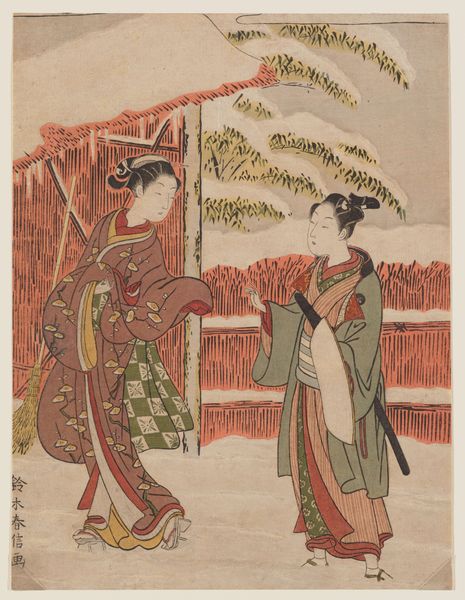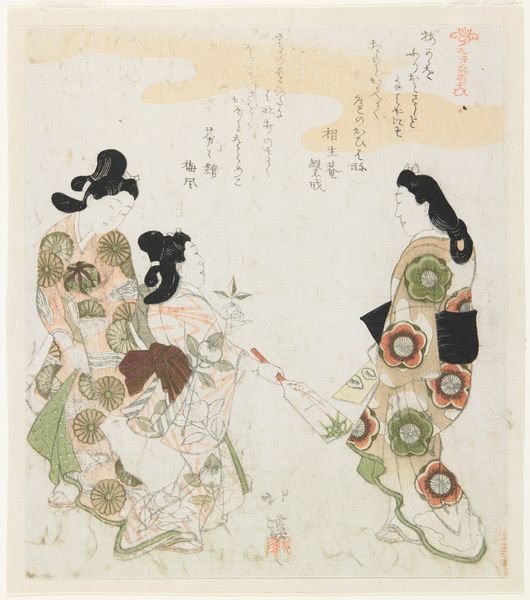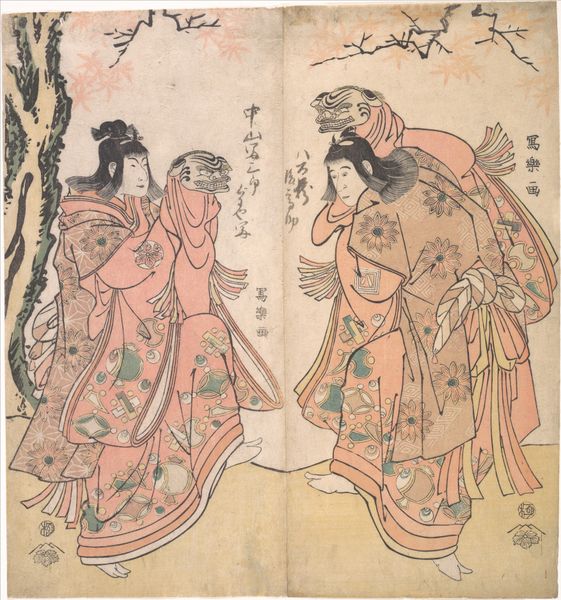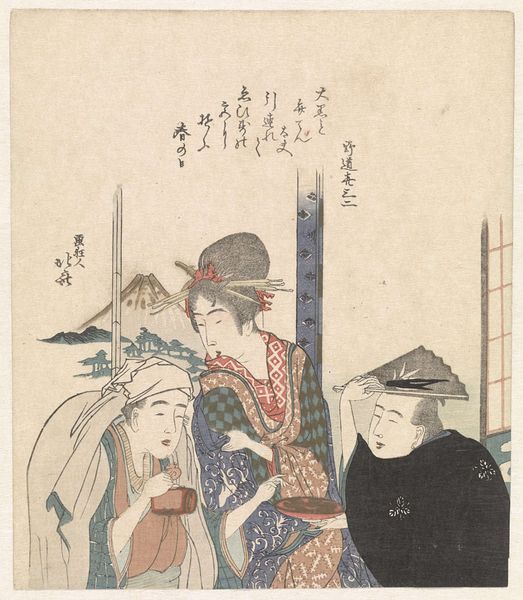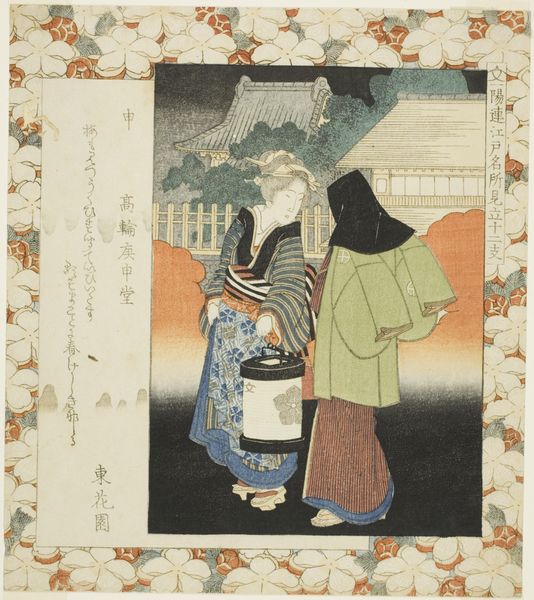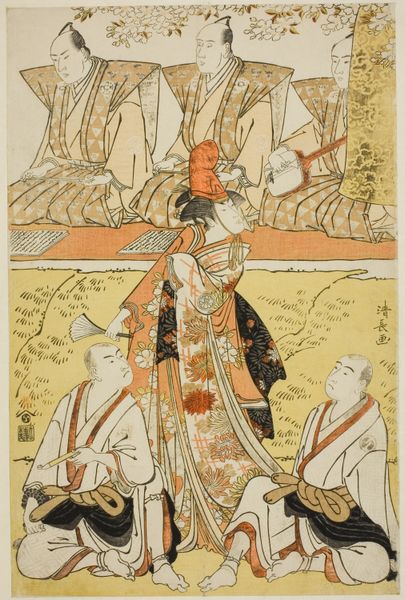
Noblemen Viewing the Nunobiki Waterfall c. 17th century
0:00
0:00
painting, watercolor, ink
#
painting
#
asian-art
#
landscape
#
figuration
#
watercolor
#
ink
#
calligraphy
Dimensions: 9 7/16 × 8 1/4 in. (23.97 × 20.96 cm) (image)52 1/4 × 15 7/8 in. (132.72 × 40.32 cm) (mount)17 3/4 × 1 in. (45.09 × 2.54 cm) (object part, bottom roller)
Copyright: Public Domain
This painting, attributed to Tawaraya Sōtatsu, depicts noblemen viewing the Nunobiki Waterfall and was made using ink, color, and gold on paper. The scene captures a moment of elite leisure in Japan, likely during the Edo period. The noblemen, identifiable by their attire, are positioned to appreciate the natural beauty of the waterfall. During this era, landscape art became closely associated with cultural identity, and the ability to appreciate such scenes was linked to social standing. The inclusion of calligraphy suggests a refined, educated audience, and the waterfall itself may function as a potent symbol of purity. Understanding this work requires looking at the conventions and expectations of its time. What did it mean to depict the elite enjoying nature? Was it simply an aesthetic exercise, or did it carry deeper messages about social order and cultural values? As art historians, we delve into historical records and cultural contexts to uncover the layers of meaning embedded within such artworks. By doing so, we see how art reflects and shapes its social world.
Comments
minneapolisinstituteofart almost 2 years ago
⋮
Tawaraya Sōtatsu, one of the founders of the Rinpa School during the early 17th century, was inspired by literary themes and painting styles from Japan's classical past. This album leaf illustrates a scene from the Tales of Ise (Ise monogatari) written around 950 recounting the life and loves of an unidentified gentleman, but probably loosely based on the courtier Ariwara Narihira (825-880). Thirty-seven leaves of this particular album by Sōtatsu and his studio are known. This leaf is the first of two that illustrate episode 87 in which a group of noblemen visit Nunobiki Waterfall, near present-day Kobe. One of the gentlemen, lamenting his low position at court, composed the inscribed poem by an unknown calligrapher: Which, I wonder, is higher-This waterfall or the fall of my tearsAs I wait in vain,Hoping today or tomorrowTo rise in the world.(trans. Helen Craig McCullough) Sōtatsu portrayed the 10th century court nobles in a traditional manner using fine, even lines and stylized faces. He updated his composition, however, by using a technique known as tarashikomi, in which darker pigments are applied over still-wet lighter colors, resulting in softly mottled, abstract landscape forms.
Join the conversation
Join millions of artists and users on Artera today and experience the ultimate creative platform.

